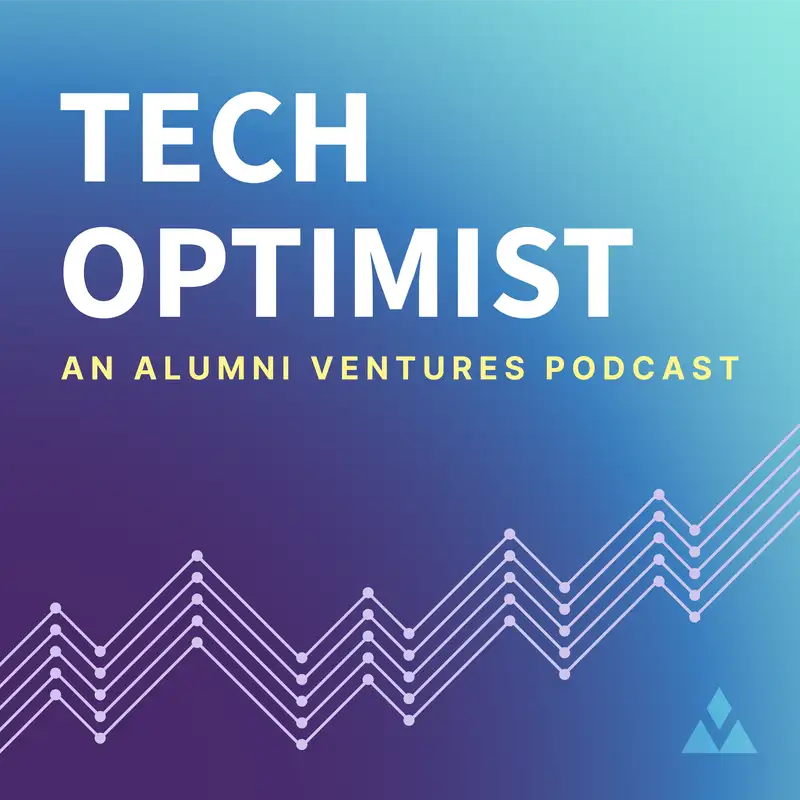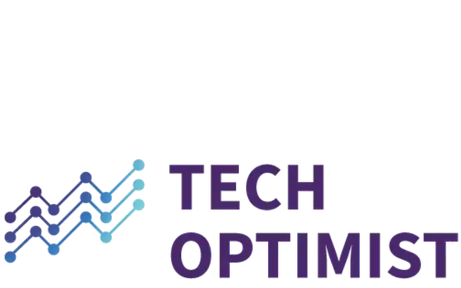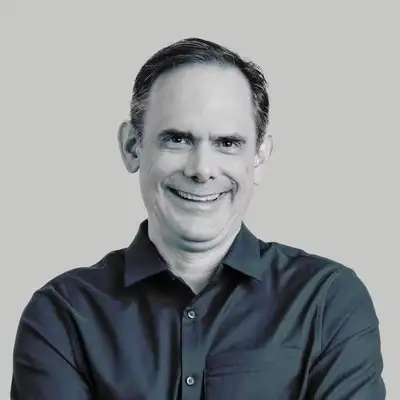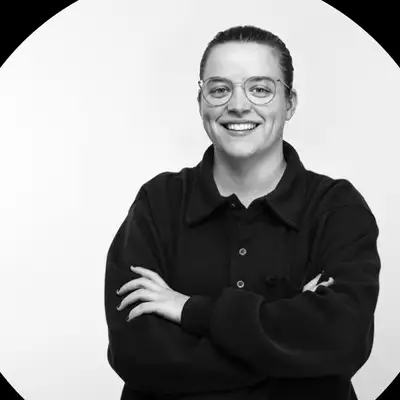#64 - Meet the Startup Revolutionizing Carbon Capture
Samantha Herrick:
This is the Tech Optimist, a podcast brought to you by Alumni Ventures, a show where we tell you the stories of tomorrow.
Cameron Halliday:
The problem is essentially that carbon capture is expensive.
Samantha Herrick:
That's Cameron Halliday, co-founder and CEO of Mantel.
Cameron Halliday:
If it were affordable, carbon capture would be a little bit of a no-brainer for hard-to-abate industries to meet their climate goals.
Chris Sklarin:
So given the environmental urgency, the speed to deployment-
Samantha Herrick:
And that's Chris Sklarin, managing partner at Alumni Ventures.
Chris Sklarin:
... obviously is pretty important.
Samantha Herrick:
Carbon capture and storage is a technology designed to reduce carbon dioxide emissions or CO2 from industrial processes and power generation to help combat climate change. That's me. My name is Sam and I am this show's narrative writer.
Let's dive into Mantel a little bit, the startup that we are going to talk to today. I will preface this that this conversation between Chris and Cameron is awesome. There is some really good insight here into their technology, how it works, how it works within our economy, and then I add a few things in there about how carbon capture works, what some good strategies are, and how to improve in the future. Let's do a little dive into the company itself. Right. Mantel was founded in 2022 as a spin out for MIT's Department of Chemical Engineering. The company is based in Cambridge, Massachusetts, and is co-founded by Cameron Halliday, our guest today, the CEO, Danielle Rapson, the COO, and Sean Robertson, the CTO.
Now, the technology, Mantel is pioneering the use of molten salt-based carbon capture materials, specifically molten borates. So the technology is designed to operate at high temperatures found inside industrial boilers, kilns, and furnaces to capture CO2 at the source of these emissions and to recover high-grade heat during CO2 absorption, offsetting energy costs for regeneration. So this approach in general aims to significantly reduce carbon capture costs, compared to conventional technologies that are available today.
As far as their funding and growth and where they are right now, in September, last month of this year, Mantel announced a $30 million Series A funding round co-led by Shell Ventures and Eni Next and this follows a $2 million seed round raised in 2022. So the company is using the funding to scale up this technology, implement a demonstration project at an industrial site, and prepare for a full-scale commercial deployment.
Progress and goals as a company that Mantel has, Mantel has already demonstrated carbon capture at lab scale, processing half a ton of CO2 per day, and their upcoming demo, this project aims to be about 10 times larger, capturing 1,800 tons of CO2 per year at an industrial site. So the company's ultimate goal is to provide a low-cost, energy-efficient carbon capture solution for hard-to-abate industrial sectors like cement, steel, and chemical production.
Before we hop into the show, we're going to take a quick second for an ad and then we'll be right back.
Matt Caspari:
Hey, everyone, just taking a quick break, so I can tell you about the Deep Tech Fund from Alumni Ventures. AV is one of the only VC firms focused on making venture capital accessible to individual investors like you. In fact, AV is one of the most active and best-performing VCs in the U.S. and we co-invest alongside renowned lead investors. With our Deep Tech Fund, you'll have the opportunity to invest in innovative solutions to major technical and scientific challenges, which can have a hugely positive effect on society, companies that have the potential to redefine industries and create a more sustainable future and deliver significant financial returns. So if you're interested, visit us at av.vc/funds/deeptech. Now, back to the show.
Chris Sklarin:
Hey, everyone, welcome and thank you for joining us. I'm Chris Sklarin, managing partner at Alumni Ventures, and I'm joined today by Cameron Halliday who is CEO over at Mantel. Cameron, why don't you do a quick intro and then we can get to some of the founder questions that we're going to start with.
Cameron Halliday:
Hi, folks, and thanks for having me, Chris. It's great to be here. As Chris said, I'm Cameron Halliday. I'm the co-founder and CEO of Mantel. We are a carbon capture company that is helping heavy industry decarbonize by capturing CO2 emissions and reducing the emissions at the site. This technology, this idea of carbon capture has been around for a long time, but it has proven to be very expensive and what we are working to doing is solving that cost problem.
Chris Sklarin:
Yep. Yep. That's great. That's great. Well, let's jump into some detailed questions on Mantel. Maybe jump in and describe the sort of core problem Mantel is solving and why it's relevant in today's market. I mean, everyone knows and they've heard about carbon capture, but it's pretty big set of words and you can sort of give us some more details at the layman's level.
Cameron Halliday:
Yeah. Yeah. The problem is essentially that carbon capture is expensive. If it were affordable, carbon capture would be a little bit of a no-brainer for hard-to-abate industries to meet their climate goals. This is a very pragmatic solution to a very messy problem, but the problem is cost. So just going one level deeper, the reason carbon capture is expensive is because it's very energy intensive and that's more of a technical problem and that's the technical problem that Mantel is solving.
Chris Sklarin:
Was there a particular moment that inspired you probably while you're doing your PhD to start Mantel?
Cameron Halliday:
Yeah. There was a moment during my PhD where we realized what we had solved. We began this journey in sort of 2018 time frame going after this problem and there was a magic moment where we realized what we had done. And since then, it has been about proving it out, scaling it up, and dealing with all the challenges that happened along the way.
Chris Sklarin:
That perfectly leads into that next set of questions, which is what makes Mantel's approach unique compared to the others in this space? Right. Everyone's trying to deal with this expense problem, but you've got some secret sauce. Actually, I'm going to to say secret salts.
Cameron Halliday:
Secret salts. Carbon capture's not new. People had been trying to do this for a very long time. This was developed a hundred years ago. And the approach that's been taken has remained pretty similar over a hundred years. The technology captures CO2 and then regenerates a pure stream of CO2 that can be used or sequestered. The challenge is that that regeneration is very energy intensive. The insight that we had is that if regeneration is energy intensive, then that actually means capture is generating energy, so that capture step produces a lot of energy. The problem is all of that energy gets wasted when you do this with amines or other low-temperature processes. The insight here is if we do this at a high temperature, all of that energy is being generated at high-grade, high-quality heat and that's heat we can use and that is driving the energy penalty down. The net energy requirements of the system basically get eliminated and that is the biggest chunk of cost and has a huge impact on the ability to do this in an affordable manner.
Samantha Herrick:
If you're still a little confused about what carbon capture is and what carbon storage is and you're not a data scientist or a biological scientist or anything, then you have come to the right podcast because I'm going to sort of tell you what it is and how it works very quickly, very briefly. So that when we get into the rest of the show, everyone's on the same page and we're all on the same wavelength about what we're actually talking about here. Carbon capture and storage is a technology designed to reduce carbon dioxide emissions or CO2 from industrial processes and power generation to help combat climate change. Here's just a quick overview on how it works. Carbon capture storage is a three-step process. Step one, you capture CO2 emissions from large point sources like power plants, steel mills, cement factories, the list can go on, and then you transport that captured CO2, and then you store that CO2 permanently deep underground. The goal is to prevent CO2 from entering the atmosphere and contributing to the ever-growing crisis of global warming for our planet.
How does it work? Right? How do you capture CO2? There's postcombustion. There's a postcombustion process where CO2 is separated from flue gases after fuel combustion, using chemical solvents. There's precombustion where fuel is converted into a mixture of hydrogen and CO2 before burning, allowing easier CO2 separation. And there's oxy-fuel combustion where fuel is burned with pure oxygen to produce CO2 and steam for easier capture. Current technologies can capture around 90% of CO2 from these flue gases. So then transporting, the CO2 is compressed into a liquid-like state and transported via pipelines, ships, trucks. And then storing it, the captured CO2 is injected deep underground into geological formations like depleted oil and gas reserves, deep saline aquifers, and unmineable coal seams, so these storage sites are typically at least one kilometer below the surface. So carbon capture's applications and importances, there's a lot of them, but just some big ones that can affect various industries are power generation, cement production, steel manufacturing, chemical processing, natural gas processing. But we're going to get into that a little bit more, so I'm going to let Cameron take it over from here.
Chris Sklarin:
So what industries are showing the most interest in the solution and who do you think the early adopters will be or do you have some early adopters already signed up?
Cameron Halliday:
Yeah. Carbon capture is a solution for a lot of things. In fact, it's a solution for essentially all emission sources. There are no silver bullets in this space, but carbon capture does get close. There are industries where this is harder and industries where this is easier and there are also industries where your other options might be better or worse. Carbon capture is particularly attractive for these hard-to-abate sectors, so cement, steel, making hydrogen, even power, especially in certain geographies.
We end up very focused on geography over industry. Our technology actually looks quite similar regardless of what the asset is, what the site is, but what matters is where is the geography? Where is the site? What are you doing with the CO2? Is there infrastructure around utilization or the sequestration of that CO2? And are you in a jurisdiction that is supportive of this? So that ranges from something like carbon pricing, the opportunity to drill wells and sequester the CO2. There's a sort of ecosystem that needs to evolve to be able to do this effectively, so we're going after those spaces. And just to be specific, that means in North America, that's Gulf Coast, Midwest, Alberta. A lot of this is being matured in the North Sea in Europe, but ultimately, this is everywhere. It's just where the early adopters are, so that's where we're going.
Chris Sklarin:
You work at high temperature, really heavy industry, hard to do the carbon capture. How does this give you the advantage over the competitors for efficiency and the scalability?
Cameron Halliday:
Yeah. There's a scale to think about here where a lot of innovation comes out of labs and it is what I'll call delicate chemistry. And it looks great at a bench scale, and then you have to scale up three, four, or five orders of magnitude and you reach a bit of a concern. When we started this, we were very focused on that problem, so we wanted to make sure we started with the chemistry that was inherently simple and inherently scalable. So that's a huge advantage to what we're doing, but the real driver for this is that energy efficiency piece I talked about. It's recovering all of this energy to drive the cost down.
Chris Sklarin:
Right. Right. Right. So often, as you've talked about, carbon capture being criticized for being so expensive. Now, when you're doing things at high temperature, how does that help your client, your customer? What do they see as the cost efficiency breakthrough for you there?
Cameron Halliday:
Yeah. When people talk about cost, we have to be very clear about the cost of what and what's included and excluded. There is a sequence of things that need to happen. There's a value chain. The CO2 needs to be captured, but it then also needs to be compressed, transported, and either stored or utilized. We try and talk about the full value chain, so the cost of all of those things, and typically what we see is we cut the cost in half, compared to the state-of-the-art amine technologies. I like to use that halving in cost because that's consistent across assumptions, as well as geography, as well as industry and sectors, but to be specific, that means we're doing this in the range of 30 to $50 a ton, and amines are typically coming in well over $80 and a lot of them are closer to $150 a ton.
Chris Sklarin:
So it sounds like a replacement market's there for anybody that's already doing it and maybe an adoption market for the folks that aren't doing it yet because of the better costs. Yeah.
Cameron Halliday:
Yeah. We're seeing a lot of sites are looking at their roadmap towards net zero and looking at making very, very significant investments in the billions per site to decarbonize that site. And that decision is being contemplated now. It's likely going to be made in the 2030s and actually they'll reach final investment decision and start construction in the 2030s. So really, what we're about is a race against the clock to be a low-risk, mature technology when those decisions are being made.
Chris Sklarin:
Excellent. Excellent. So how do you integrate into the existing industrial processes and why might it make adoption easier for places like cement or steel industries versus other solutions?
Cameron Halliday:
Yeah. A lot of other solutions essentially involve rebuilding the entire site and that is something that scares the industry and that is why you're not seeing a lot of adoption. Not only is that a crazy, crazy expense and scrapping of stranded assets, it is also just hugely risky. And from a permitting and policy point of view, a lot of these sites were built a hundred years ago. They don't really get built new anymore. They get rebuilt and fixed and changed, and a lot of the electrification, hydrogen firing pathways are pretty radical changes to how some of these processes work.
The allure of carbon capture is we leave that alone, but we still fix the problem. We fix the problem by capturing the CO2 coming out of the back end of the process, not interfering with the front end, and enabling that industry or that site to continue by and large as is but with this additional unit that's cleaning up the mess that it's creating. There's a good analogy here because we've done this before and this is what I find very intriguing. This was a problem in the '70s for a different gas. SOx and Nox was causing acid rain and we put systems on the back end of these facilities and we reduced those emissions, and now, no one even thinks about this problem. It was solved and I am optimistic that we can do the same thing for carbon.
Chris Sklarin:
I recall the scrubbers, right? You add scrubbers to the smokestack system. Yeah.
Cameron Halliday:
It's exactly the same process.
Chris Sklarin:
Just do it. Obviously then, Mantel's technology can be retrofitted. How does this compare to the other emerging carbon capture systems? Literally, they want to rebuild your whole plant? Is that really the-
Cameron Halliday:
No. All of carbon capture is a retrofit play. You're adding something on the back end, so we look very similar to that. The advantage of what we're doing though is we don't need to consume a huge amount of additional energy to run our system. That's the key that makes this project economical and making this economical is really the only way that we're really going to see wide-scale adoption.
Chris Sklarin:
Got it. Got it. Given the environmental urgency, the speed to deployment obviously is pretty important, so how quickly can you scale across these industries and make you faster than all the competitors who are trying to do this?
Cameron Halliday:
This is a race against time, and as I said earlier, you're scaling orders of magnitude and that is very hard, so the journey we're on is difficult, but the impact that we can have is so, so huge that it's worth the pain. The challenges here, there are specific things we're doing. You can standardize designs, modularize. As I mentioned, a lot of what we look at looks quite similar across emission sources, so we can be quite standardized, but we have to build big systems. We have to demonstrate the technology each scale and then we have to continue learning and improving and getting to full scale.
Chris Sklarin:
Excellent. And then you obviously partner with various technologies or technology companies for the capture/sequestration side, right? So reliable storage, how do you approach that end-to-end solution? What collaborations or partnerships do you see being critical here?
Cameron Halliday:
Yeah. The way this ecosystem is evolving... And I'll say that because it's still a nascent market and space, so everyone I would say is still working out exactly what their role is. But you have the emitter that is trying to decarbonize. You have the carbon capture technology provider, which is us and amine technologies and there's lots of other solutions out there. And then you need to do something with the CO2, but all of it is done at the project level, so we're looking at the projects and looking at what you could use or sequester the CO2, what you could use it for or where you could sequester it.
Chris Sklarin:
Got it.
Samantha Herrick:
Now, on their website, Mantel has a lot of research papers and peer-reviewed publications that they have written under their technology tab on their website, and one of them, I want to share and I want to read a little bit from it. All of them are great, highly recommended read if anyone's interested, but the title of this one, it came out in August of this year, is titled What to do with all this captured CO2? I'm going to read bits of their executive summary of this paper. I'm not going to read the whole thing because we'd be here for hours. It'd be an interesting few hours, but for this purpose of the show, I'm just going to read a snippet because I think it really ties into what the guys are going to talk about next, sort of the next topic that comes up, but I think it'll help to have this sort of information before we dive into the governmental and federal aspect of all of this.
The world will need to capture over 6 billion tons of CO2 a year to meet net-zero goals. An important question is: what to do with all of it? Mantel is tackling emissions in the heavy industrial sector and based on the analysis of the location of U.S. emissions today, we find there are ample prospects for managing current CO2 emissions, on top of opportunities to scale carbon management across the economy. We estimate that 95% of U.S. sites representing 74% of heavy industrial emissions have clear pathways to manage their current level of emissions with existing infrastructure through local storage, 58%, or transport via truck, 7%, rail, 26%, ship, 17%, or pipeline, 8%, for CO2 storage or utilization.
There are many possible markets for CO2, including synthetic fuels and chemicals, which could soon demand all captured CO2 globally and would be unlocked through a high willingness to pay and low-cost clean energy. Even without utilization demand, the existing incentives and infrastructure make projects profitable from Mantel's exceedingly low-cost capture technology. In the U.S., assuming top-line revenue for decarbonizing at $85 per ton of CO2 and transport and storage costs near 15 tons per CO2, the average margin for the capture step is $70 per ton of CO2. Mantel cuts capture costs by 50 to 75% relative to conventional carbon capture technologies, improving returns and making two-thirds of U.S. projects profitable. In the future, additional profitability can be unlocked through demand for CO2 utilization that provides additional revenue, as well as infrastructure build-out that will drive down the cause of transport and storage.
Cameron Halliday:
And those are different partners. In many cases, they're oil and gas players because they know this space. They know the engineering of this very well. A lot of them actually had been doing this for a long time already, moving millions of tons of CO2 around for different purposes, but the skill set is very similar. So when we come into a project, we are often looking at those projects, asking the emitter these questions. It's where are you one, from how are we funding this project point of view, but two, what are we doing with the CO2 and how mature are we in that aspect of the project? It is not something we bring to the table. It's not our expertise. Often, we know the people and we can bring them into the conversation, but it is an important part of this.
Chris Sklarin:
Got it. Got it. That's great. How do you see the role of government policy here in scaling the business? Because certainly, it sounds like, as you're talking about geography, it wasn't geography because you like the south or the north. It was more geography because you might like the municipality or the state or country.
Cameron Halliday:
Yeah. Yeah. This is not just us. What the world needs to decarbonize is some strong motivation to decarbonize and that needs to be financial and that is by and large the role of policy. In North America or in the U.S. specifically, 45Q is the tax credit that is motivating this. So that is currently $85 a ton, which means if you can capture, compress, transport, and store CO2 for less than $85 a ton, that project is in the money. That project is making money and that is a good-
Chris Sklarin:
Got it.
Cameron Halliday:
Just as a side note, the reason why these technologies aren't being deployed that rapidly is there aren't really many projects doing this for less than $85 and that's the step change we enable. That $85 is a tax credit in the U.S. In Canada, it's a carbon tax, so it's reversed. It's a stick instead of a carrot, but it applies the same kind of function. And the EU is similar, emissions trading scheme. We need to be doing this at a price point that makes sense and then these projects are financial, so we're going off the jurisdictions in geographies that have strong carbon prices, and it's not just the absolute value. It's the certainty in that value and what it means over the lifetime of a 20, 30-year project. It's one thing to say this is $100 a ton, but if it's going to be stripped away in two years, then no project investor is going to touch it.
Chris Sklarin:
Right. What challenges do you face in scaling Mantel? I mean, have you gotten to that $85 magic number or is that still something you're working on with the pilot?
Samantha Herrick:
That's the $85 per ton of CO2 that we just talked about.
Chris Sklarin:
Demonstration plan-
Cameron Halliday:
Yeah. Pilots are not cost effective.
Chris Sklarin:
Right. Right. That's-
Cameron Halliday:
The purpose of the-
Chris Sklarin:
... demonstration.
Cameron Halliday:
Yeah. The purpose of the demonstration project is to fully de-risk the technology end to end and that will give us confidence in the commercial scale designs, which are hitting that number. For us, really, it comes down to scale. Sorry. If you want to be doing something for tens of dollars a ton, you need to be moving millions of tons of it a year. That's just an economies of scale you have to hit, so we have to build a pretty big system to hit those numbers, but even at moderate sizes, what I'll say hundreds of thousands of tons a year, we are cost compelling.
Chris Sklarin:
That's good. So cost compelling means really close to that $85 number.
Cameron Halliday:
Yeah. Less that $85 and trying to make a positive return for whoever's investing in that project whether it's the site, a project developer, project financier, whatever that happens to look like.
Samantha Herrick:
Okay. You all know the drill. Time for one more ad and then we'll be right back. Hang tight. Don't go anywhere.
Speaker 5:
Do you have a venture capital portfolio of cutting-edge startups? Without one, you could be missing out on enormous value creation and a more diversified personal portfolio. Alumni Ventures, ranked at top 20 VC firm by CB Insights, is the leading VC firm for individual investors. Believe in investing in innovation? Visit av.vc/foundation to get started.
Chris Sklarin:
That's awesome. So looking ahead now to your next round of funding, I know you just closed the round that we helped join, but what would be your biggest sort of priorities, milestones in deploying new capital? How do you plan to do that?
Cameron Halliday:
Yeah. We just closed the Series A and now we start the next one.
Chris Sklarin:
Exactly.
Cameron Halliday:
There are really two big milestones for us through the Series A. The first one, as I mentioned, is the demonstration project, so that project is about to start construction and we'll be in construction through next year. We'll be running our testing and commissioning plan towards the end of next year, and then the goal is by 2026, we'll have the data to be able to go and raise the Series B with a fully de-risked technology. Now, in parallel to that, we are doing a lot of work on commercial scale units and specifically the design and setting up the partners for those commercial scale units, so that while we're doing the de-risking of the technology, we're also positioning ourselves to hit the ground running and start a lot of commercial scale units as soon as we have the data from the demonstration.
Chris Sklarin:
Right. I got to imagine, once you have the data from the demonstration, you also start signing up customers for the commercial scale units. Right? So you can say to investors on the B side, "Hey, here's all these customers we have signed up. If we just have money to build things, they will sign up and deploy."
Cameron Halliday:
Exactly, Chris, and we're signing those guys up now.
Chris Sklarin:
That's great.
Cameron Halliday:
There's a lot of excitement around what we're doing and the process for deploying these projects is time consuming. You do design studies for, often, many years before you start building, so we're engaged on a lot of those design studies right now, building conviction around operability, does it work, but also the cost factor and getting a... Through these design studies, you can get pretty close to a definitive cost point and that's what's investable. That's what we go and build the project against.
Chris Sklarin:
Got it. Got it. I guess, how do you plan to measure success here? So the environmental impact, the short and long term, how does Mantel sort of declare success? I mean, obviously, the investors love to declare commercial success, but there's got to be few other metrics there too.
Cameron Halliday:
Yeah. Yeah. Billions of tons of CO2 captured, that's our North Star. How many billions? We're some fraction right now, but we have big ambitions.
Chris Sklarin:
On the collaboration side, I guess, to be a little more general, I guess, if you had to pick another company or research institution to collaborate with, who would it be and why? You're obviously already at MIT, doing lots of stuff out of the engine.
Cameron Halliday:
We have collaborators around the world already. We work with universities on various things, but a lot of our focus right now is commercial. A goal of ours and a culture within the company is this is not meant to be a science experiment. We've done the science. The science is sound. The science is secure. This is about scaling up and deploying. So the partners we're looking for are the sites, the emitters that are committed to decarbonizing it, not just window shopping, the sites and the partners that understand this space and what it takes. And that's the emitter, but that's also, as I mentioned, the offtaker. That's the finances. That's all of the stakeholders involved.
Chris Sklarin:
Excellent. Well, I was just at the MIT Industrial Liaison Program meeting yesterday about digitization, so a different world, not sustainability. But you'll find lots of partners, I'm sure, very looking forward.
Cameron Halliday:
And we've made a lot of great connections and have a lot of partners that have joined us on our journey and we're always looking for more folks that think they can help us on our mission.
Chris Sklarin:
That's excellent. Well, I guess to wrap up here, what's something you've learned here as CEO journey you didn't expect going into it?
Cameron Halliday:
It's a good question. I think when I started out, I was told this would be very hard and I don't think I internalized it. I think I've internalized how difficult this journey is, but we remain very committed to it and we go from strength to strength as we scale up and prove out what we're doing. And particularly, what gives me a lot of enthusiasm and hope is when we engage with customers and see their enthusiasm for what this could look like for their sites. That makes all of the challenges worth dealing with.
Chris Sklarin:
Yeah. You've hit a really, really strong pain point when they are ecstatic that you've gotten them out of that pain, right? That's-
Cameron Halliday:
Exactly. Exactly.
Chris Sklarin:
... super, super important.
Cameron Halliday:
That's very rewarding.
Chris Sklarin:
Excellent. Well, for our listeners interested in supporting Mantel's mission, what's the most sort of impactful way they can get involved or help you guys out?
Cameron Halliday:
Yeah. Depending on who you are, one, people. We're always hiring. We're growing very quickly. Commercially, we're looking for sites. We're looking for industries that are committed to decarbonizing and want to find a pragmatic and low-cost way of doing so. As Chris mentioned, we finished the Series A, but we're starting on the Series B now, so if you're an investor, reach out. We like to build these relationships early and get to know the investors and their interest and their focus and what they are looking for, so however you might be interested, reach out, connect, and I'd love to get to know everyone.
Chris Sklarin:
That's excellent. Well, thank you, Cameron. We'll make sure your contact info is in the show notes and thanks again for spending a half hour with us to chat about Mantel. It's exciting.
Cameron Halliday:
Thank you so much, Chris.
Chris Sklarin:
Cheers.
Cameron Halliday:
Bye.
Samantha Herrick:
Thanks again for tuning into the Tech Optimist. If you enjoyed this episode, we'd really appreciate it if you'd give us a rating on whichever podcast app you're using, and remember to subscribe to keep up with each episode. The Tech Optimist welcomes any questions, comments, or segment suggestions, so please email us at info@techoptimist.vc with any of those and be sure to visit our website at av.vc. As always, keep building.








